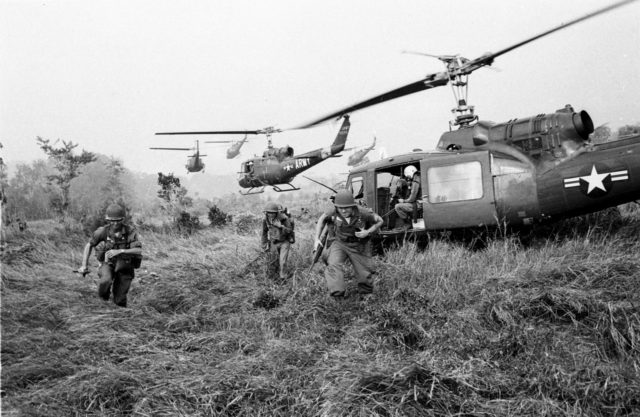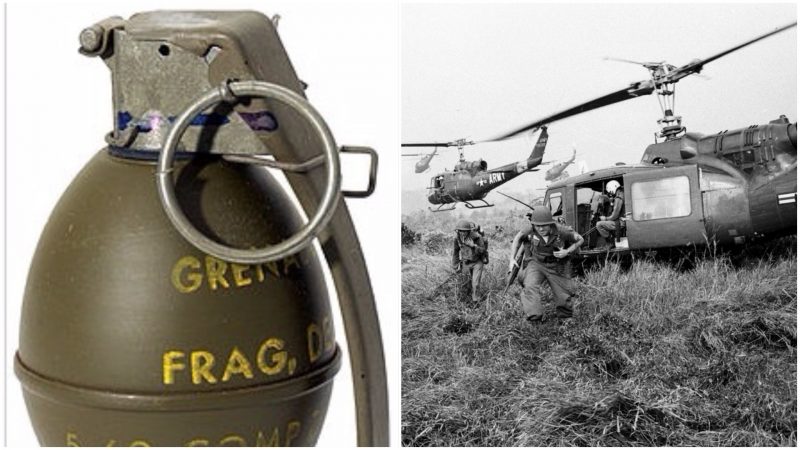In the 1970s the US military adopted a new word – ‘fragging’. The term refers to the killing of an unpopular commander, a frag being a small hand grenade used for the purpose.

One such death occurred on October 23, 1970. Two Marine privates, one of them named Gary Hendricks, were found asleep at his post on Hill 190, west of Da Nang. His platoon sergeant, Richard Tate, berated them but took no disciplinary action.
The next day Tate was discovered dead with his legs torn from his body. Hendricks had dropped a grenade on the sleeping sergeant at 1 am that morning. Tate was supposed to return to his wife and child in the US in just three weeks.
One Captain C. Tower defended Hendricks in the court martial that followed. The private had confessed his act to other Marines, saying he ‘had gotten one at least.’ With a signed confession in the prosecution’s hands, there was no recourse for the defence but to plead insanity.
However, psychiatric assignments failed to support that defence. He was convicted of murder and the death sentence was commuted to life imprisonment in a military prison. Hendricks unsuccessfully appealed the judgment and was paroled after eight years and nine months in November 1980. He went on to obtain postgraduate degrees, including one in criminology.
This incident was by no means isolated. Instances of fragging in South-east Asia are recorded from 1966 and increased toward the end of the Vietnam War.
From 1969 to 1972 there were nearly 900 cases reported, but as many as 1017 may have occurred, causing 86 deaths and 714 injuries. Fragging still occurs, as it did occur before the war, but never to the extent seen in this period. This has been put down to the growing unpopularity of the war and the concurrent breakdown in the discipline of the US Armed Forces.

Grenades seem to have been chosen by perpetrators because they leave no ballistic evidence and cannot be traced to a single user. But mines, other explosives, and firearms were also used.
Most incidents involved the Marine Corps and Army. It tended to be rarer in the Navy and Air Force, where grenades and other weapons were less accessible.
So what catalysed the sudden increase in fragging in the 70s? The Tet Offensive of 1968 produced a crisis at home. United States Forces had failed to defeat the North Vietnamese forces, and the government was finding it harder to justify the war. Resistance at home grew, and the unpopularity spread to the combat troops, many of whom had been conscripted. Morale amongst the enlisted ranks plummeted. In fact, some declared the state of the Armed Forces to be worse than at any other time. The Civil Rights Movement also played its part. Particularly after the assassination of Martin Luther King in 1968 racial tensions erupted on the battlefield. The growing drug culture also affected the discipline of the troops. The problem was compounded when troops began to be withdrawn from Vietnam. Some soldiers took to fragging as a means of discouraging their leaders from going into battle.

The military responded to the fragging crisis by restricting access to grenades and other weapons and isolating entire units in which incidents had occurred while investigations were undertaken. In May 1971, the distribution of grenades was halted. Inventories of weapons were taken and searches of soldiers’ quarters were ordered. These measures, however, had little effect, as weapons could be easily acquired on the black market.
Officers took precautions against fragging of course. Some changed their sleeping arrangements and quarters. They went to bed armed. Often they would ignore drug use and other disciplinary problems so as not to antagonise the men. They would negotiate with their men concerning missions rather than order them. They might even delay, alter, disrupt or cancel tactical operations.
It was difficult to prosecute fraggers, and only a few appeared before military courts. In practice, it was hard to distinguish between fragging and saboteur activity. Witnesses were often not readily on hand, soldiers being unwilling to inform on their comrades. Ten fraggers were convicted of murder but most served brief prison sentences.
The shortest was ten months, and the longest was thirty years.

The breakdown in discipline within the Forces, epitomized by fragging, played its part in bringing US involvement in Vietnam to an end. The military realised that a conscript force could not be relied upon anymore and the last conscript was inducted in 1973. Further, it introduced reforms to moderate military discipline. Fragging still occurs. In the Iraq War of 2003, three military personnel were charged with the crime.
